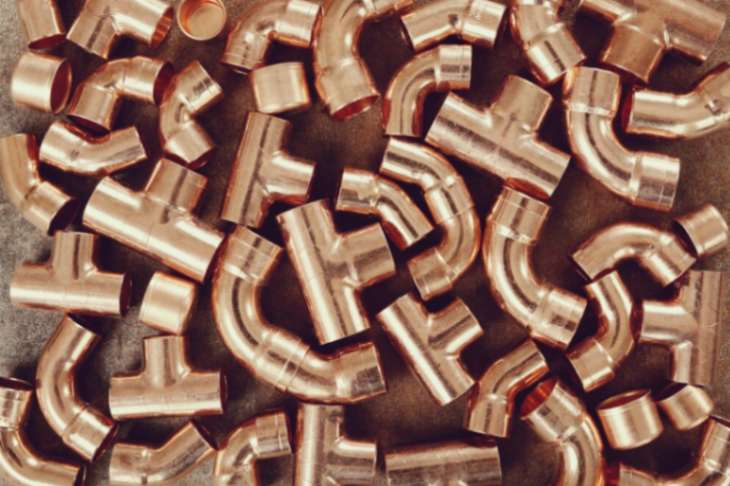Nickel Alloy 600: A Detailed Overview Nickel Alloy 600, also regarded via its UNS designation N06600 or the exchange names Inconel 600, is a flexible nickel-chromium alloy recognized for its awesome resistance to oxidation, corrosion, and excessive temperatures. Developed in the mid-20th century, Alloy 600 has become an important material in diverse industries due to its potential to face up to excessive conditions, making it suitable for programs starting from chemical processing to aerospace and nuclear engineering.
1. Chemical Composition and Microstructure: Nickel Alloy 600 is primarily composed of nickel (around 72%), with large amounts of chromium (14-17%) and iron (6-10%). This composition provides a unique combination of homes that make the alloy surprisingly proof against a huge variety of corrosive environments and excessive temperature programs. The alloy’s microstructure is commonly a face-focused cubic (FCC) crystal shape, which remains solid throughout an extensive temperature variety. Nickel (72%): The high nickel content guarantees first-rate resistance to corrosion and oxidation, mainly in lower environments. Nickel also imparts desirable mechanical residences and stability at expanded temperatures. Chromium (14-17%): Chromium contributes to the alloy’s resistance to oxidation and corrosion in oxidizing environments, consisting of ones containing hot gases or chemicals like sulfuric or nitric acids. Iron (6-10%): Iron enhances the alloy’s overall strength and contributes to its resistance to corrosion and scaling at excessive temperatures. Other factors: Small amounts of carbon, manganese, silicon, copper, and sulfur may also be present, typically in trace quantities, to refine specific characteristics, including grain structure and oxidation resistance.
2. Mechanical Properties: Nickel Alloy 600 is famous for its staggering mechanical residences, which include excessive electricity and top ductility throughout a wide temperature variety. These houses make it suitable for packages where toughness and sturdiness are required, even underneath extreme thermal situations. Yield Strength: Alloy 600 commonly exhibits a yield power of approximately 240 MPa (35 ksi) at room temperature, which remains tremendously stable even at increased temperatures. Tensile Strength: The alloy has a tensile electricity of approximately 550 MPa (eighty ksi), making sure it can resist full-size mechanical strain without permanent deformation. Ductility: Despite its high energy, Alloy 600 keeps top ductility, with an elongation at spoil of around 40%. This permits the material to absorb power and warp plastically without fracturing. Creep and Stress Rupture Resistance: At elevated temperatures, Alloy 600 demonstrates exceptional resistance to creep (time-based deformation) and stress rupture, making it suitable for long-term use in high-temperature environments.
3. Corrosion and Oxidation Resistance: One of the most critical attributes of Nickel Alloy 600 is its tremendous resistance to a huge range of corrosive environments. The alloy’s resistance to both decreasing and oxidizing conditions makes it notably versatile. Oxidation Resistance: Alloy 600 can face up to oxidation at temperatures as much as 1150°C (2100°F), making it best for high-temperature programs which include furnace components, fuel turbine engines, and heat-treating devices. The chromium content forms a shielding oxide layer at the surface, preventing similar oxidation. Corrosion Resistance: The alloy is pretty proof against many corrosive media, which include acids, alkalis, and chlorides. It plays highly nicely in environments containing sulfur compounds, wherein it resists each sulfide pressure cracking and pitting. Resistance to Chloride-Induced Stress Corrosion Cracking (SCC): Alloy 600’s excessive nickel content makes it specifically proof against stress corrosion cracking, particularly in chloride-wealthy environments wherein different substances might fail.
4. Thermal Stability and Resistance: Nickel Alloy 600 maintains its mechanical integrity and corrosion resistance even at expanded temperatures, which is a key reason for its use in excessive-temperature packages. High-Temperature Performance: The alloy remains stable and retains its strength at temperatures up to 1150°C (2100°F). This makes it appropriate to be used in programs like furnace muffles, retorts, and warmth exchangers, where additives are subjected to severe warmth. Thermal Fatigue Resistance: Alloy 600 is proof against thermal fatigue, that is the sluggish weakening of a material because of repeated thermal cycling. This belonging is critical in packages wherein additives are uncovered to common heating
5. Applications: Nickel Alloy 600 combination of excessive energy, corrosion resistance, and thermal stability makes it an ideal fabric for a broad range of packages across various industries: Chemical Processing: Alloy 600 is broadly used inside the chemical processing enterprise for gadgets consisting of warmness exchangers, evaporator tubes, and reactors. Its resistance to corrosive chemical substances and high temperatures makes it a reliable preference for these traumatic environments. Aerospace: In the aerospace enterprise, Alloy 600 is used in additives like jet engine parts, turbine blades, and exhaust structures, where it needs to resist intense temperatures and mechanical stresses. Nuclear Engineering: The alloy is employed in nuclear reactors, especially in the steam mills, and manages rod additives, due to its resistance to oxidation and corrosion in excessive-temperature water and steam environments. Furnace Components: Due to its excessive-temperature oxidation resistance, Alloy 600 is normally used in furnace components, along with trays, baskets, and fixtures, where it keeps its integrity over prolonged periods of publicity to severe heat. Marine Industry: Alloy 600 is likewise used in marine programs, specifically in environments where additives are exposed to seawater or high-salinity situations, in which its resistance to chloride brought on SCC is specifically valuable.
Advantages:
Excellent resistance to oxidation and corrosion in a huge variety of environments. High electricity and exact ductility throughout a large temperature variety. Superior resistance to chloride-brought-on stress corrosion cracking. Good thermal balance and resistance to thermal fatigue. Limitations: The material may be greater hard to machine due to its work-hardening properties. Higher price in comparison to conventional stainless steel, even though justified by its overall performance in severe situations.
Conclusion
Nickel Alloy 600 is an excessive-performance material with a unique combination of properties that make it crucial in packages wherein high strength, corrosion resistance, and thermal stability are critical. Whether within the chemical processing enterprise, aerospace, or nuclear engineering, Alloy 600 provides reliable and long-lasting overall performance, even within the most annoying environments. As industries continue to evolve and face increasingly harsh conditions,



